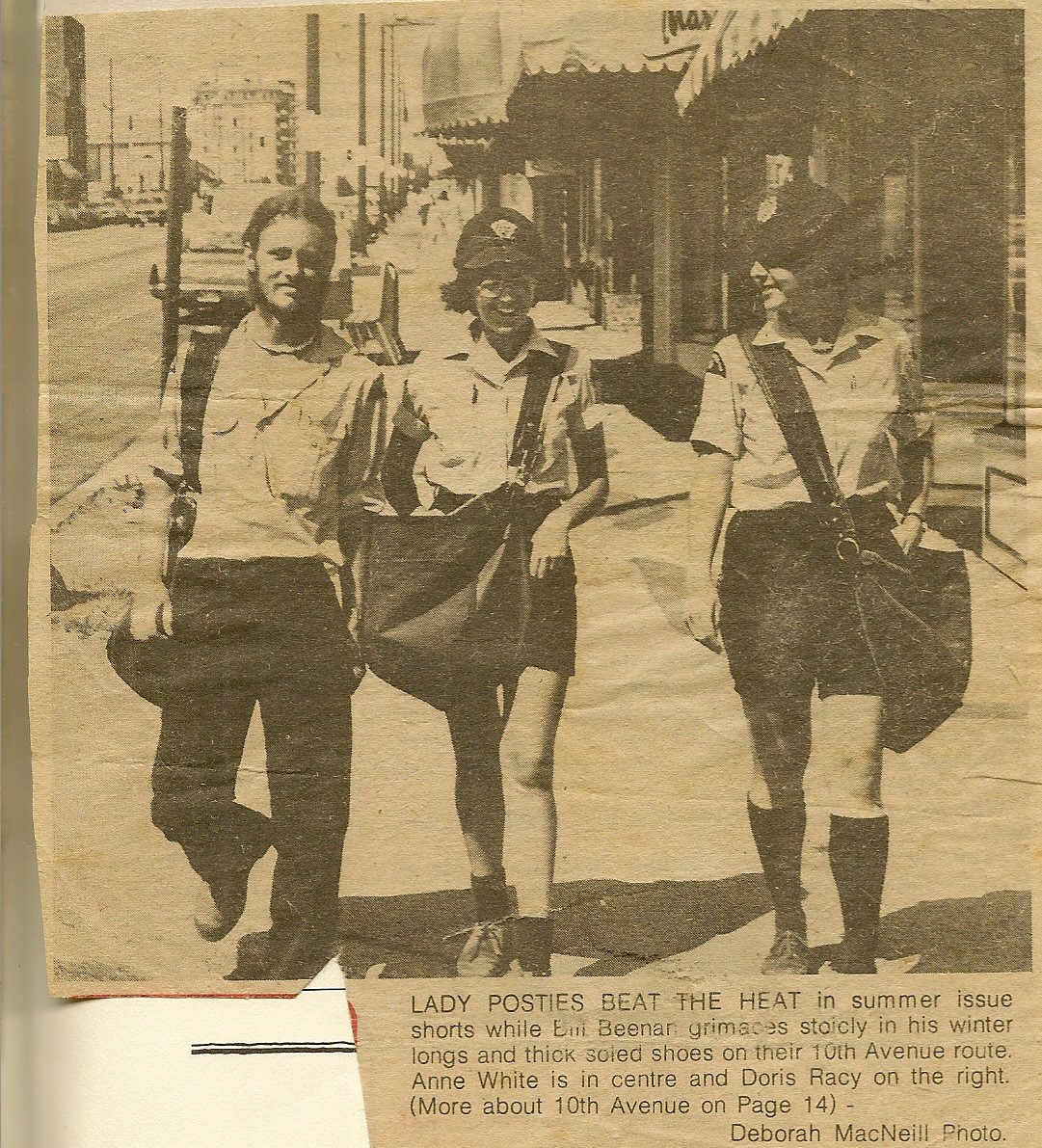The current strike by Canada Post workers has made me reflect on my early years as a letter carrier in Vancouver, when the crown corporation was first hiring female letter carriers.
It was 1974, and I was 21. I had moved to Vancouver from southwestern Ontario because I wanted to experience a different part of Canada. I initially had worked in a bank, but was feeling quite restless and unhappy in this job. Then, I saw the mail carrier come into the bank to deliver the mail. I was so impressed by the fact it was a woman, that I immediately went up to her and asked: “They’re hiring women for this position now?” She responded, “Oh yes. It started a few months ago.”
I called in sick the next day, went to the post office and applied. A few weeks later, I was on the job.
I was aware that some of the older male carriers struggled with having women working alongside them. This did not bother me because my father, who was also a mail carrier, had always maintained that women could do this (or any) job as well as a man.
Although it was the early 1970s, the first female letter carrier in Canada had actually been hired in 1964. Her name was Norah Stackard. She was fired after one and a half days on the job – because of her gender. Apparently, the postmaster general said the job should be reserved for men until the Civil Service Commission and Canada Post finished studying the prospect of employing female letter carriers. The general consensus at that time was that delivering the mail was “a man’s job.” It would take almost a decade before women letter carriers finally were allowed to be hired.
I worked for the post office for several years before leaving for other pursuits, and am now retired. But since that time I watched as the post office changed.
When I started, I met people who wanted to discuss what I thought of the job, what it entailed and how many women were doing this. I remember one of my routes had quite a few seniors, many of whom would greet me at the door. They wanted to talk, to connect with someone. I had many offers for coffee and tea breaks each morning (which I was tempted to accept). I began to realize the importance of the postman or woman to the people in each neighbourhood.
Today, people don’t write letters much any more, and many of us get our mail from community boxes and not from a letter carrier who goes door to door.
There has been changes on working conditions for postal workers, too. Despite what you may think of postal employees and their union, they have moved forward. They opened the door to women and it is interesting to note that by 1981, it was postal workers and the postal union, CUPW, who were among the first to implement paid maternity leave in Canada. In the process, they brought together women’s groups to focus national attention on the issue.
But there is still work to be done. Rural and suburban mail carriers, most of whom are women, do not earn the same amount as urban carriers. I also learned that postal employees are regularly expected to work long overtime hours, sometimes logging 10-hour days.
And just like the post office, Canadian society is witnessing change. Institutions that were once the backbone of our society, the glue that connected us – the family, churches, doctors, the library, the post office – are all going through this change. And although people do not write letters as much these days, one thing remains constant – the need for community. As I think about all of this, I can’t help but be reminded of the thing that stood out the most for me when I was a letter carrier all those years ago. It was that the people I met wanted conversation. They wanted to greet and talk with the letter carrier. No matter how much we do online, we still have a need to gather together, if not in conversation, at least in just being close by. Could not the post office be part of building community?
There is a suggestion now to bring back a postal banking service (especially in rural areas and in Indigenous communities where there is often no bank or credit union). To me, this makes a lot of sense. The union suggests that this will be part of an overall plan to reinvent the post office and make it a real hub for every neighbourhood; to bring it back to a place that is not for profit, but for community. Interestingly, this idea is also echoed in the Leap Manifesto, a political manifeso issued by a broad coalition of Canadian authors, artists, national leaders and activists in 2015, during the last federal election campaign. It calls for a restructuring of the Canadian economy and issues “a call for a Canada based on caring for the earth and one another.”
Perhaps these words from Turkish author and playwright Mehmet Murat ildan sum it up best:
“Postman’s bag is always heavy because it carries the life itself: it carries all the sorrows and all the joys, all the worries and all the hopes!”
Anne Ehret worked as a letter carrier in Vancouver for three years in the early 1970s. More recently, she spends what time she can creating community, in collaboration between a woman’s group in Canada and Mali, or getting involved in a local refugee initiative.
Help make rabble sustainable. Please consider supporting our work with a monthly donation. Support rabble.ca today for as little as $1 per month!




